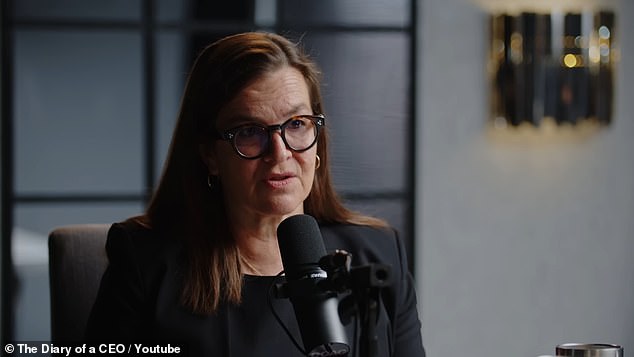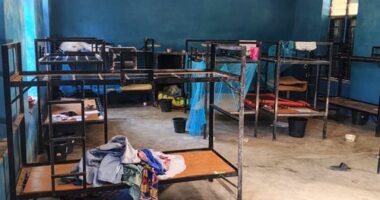Share this @internewscast.com
A nuclear conflict would have catastrophic consequences, dispersing radiation across almost the entire planet. However, an expert has identified one area where survival might be more likely.
Investigative journalist Annie Jacobsen suggested that Americans hoping to escape the severe impacts of a potential World War III should look into relocating to Australia or New Zealand.
Speaking on The Diary of a CEO podcast, Jacobsen noted that these neighboring Southern Hemisphere nations would be among the few places capable of maintaining agriculture after a nuclear disaster in the northern regions.
As the conflict in the Middle East drags on, fears of Iranian sleeper cells in the US have Americans worried that a weapon of mass destruction could go off at any minute.
Meanwhile, ceasefire talks between Iran and Israel appear at an impasse, with both sides already claiming the other has violated a fragile truce.
Nuclear powers Russia and China, allies of Iran, have already warned that the US getting involved in the Middle East conflict could send the entire world spiraling into an all-out war than leads to Armageddon.
Jacobsen discussed the chilling timeline in which a nuclear war would decimate most of Earth while speaking with podcast host Steven Bartlett.
‘Places like Iowa and Ukraine would be just snow for 10 years. So agriculture would fail and when agriculture fails, people just die,’ Jacobsen warned.

Investigative journalist Annie Jacobsen revealed that anyone looking to survive a nuclear war should head to Australia or New Zealand

Israel’s war with Iran, and the recent involvement of the US military, has many fearing that the conflict could turn into a global crisis
‘On top of that, you have the radiation poisoning because the ozone layer will be so damaged and destroyed that you can’t be outside in the sunlight,’ Jacobsen said during the 2024 podcast.
‘People will be forced to live underground. So you have to imagine people living underground, fighting for food everywhere except for in New Zealand and Australia,’ she continued.
Before the crisis in the Middle East even escalated, Jacobsen had released a book entitled Nuclear War: A Scenario, which laid out in shocking detail how the end of the world would play out during World War III.
‘Hundreds of millions of people die in the fireballs, no question,’ she told Bartlett.
However, Jacobsen added that a 2022 study by Professor Owen Toon in Nature Food claimed the death toll would quickly consume the majority of the world’s population.
‘Professor Toon and his team… sort of updated [the] nuclear winter idea based around food, and the number that they have is five billion people would be dead,’ Jacobsen said.
Nuclear winter describes the severe, long-lasting global cooling that could happen after a large-scale nuclear war.
In a full-scale war, where many cities are hit by nuclear bombs, those explosions would cause huge fires, burning buildings, forests, and other structures.
The smoke and soot from these fires would rise high into the sky, into a part of the atmosphere called the stratosphere, where it can stay for years because rain can’t wash it away.
This thick layer of soot would block sunlight from reaching the Earth’s surface, like a giant shade over the planet.
With less sunlight, the Earth would get much colder. The experts Jacobsen spoke to in her book predicted that temperatures in the US would plunge by roughly 40 degrees Fahrenheit, making farming impossible.
This cold and darkness would lead to massive food shortages and starvation. Animals and fish would also struggle to survive, making food even scarcer.

The idea of ‘nuclear winter’ first came to the world’s attention in an article by scientist Carl Sagan in 1983

Steven Bartlett said he was happy to have taken a recent trip to Australia when fighting in the Middle East broke out in 2024. Renewed tensions in 2025 have taken the region to a nuclear tipping point
‘The population of the planet currently is what, eight billion?’ Bartlett said.
‘So there’d be three billion people still alive. Where shall I go to be one of the three billion? I was just in New Zealand and Australia,’ the host mentioned.
‘That’s exactly where you’d go. According to Toon, those are the only places that could actually sustain agriculture,’ Jacobsen replied.
Along with both nations being capable of producing food once the dust settles on a nuclear war, Australia and New Zealand have several other factors which make this part of the world a haven from global destruction.
They are far from the major nuclear powers which would likely spark a world war, the US, Russia, and China.
Being island nations, their isolation in the Pacific and Southern Oceans limits fallout from nuclear detonations up north.
That’s because prevailing winds and ocean currents would carry much of the radioactive material away from these regions.

While Iran does not possess such weapons, its allies Russia and China have more than 6,000 nuclear warheads combines, leading Americans to worry that the US could soon be a target. A recent map details how radioactive fallout would cover the US after World War III
For those who can’t afford a trip to Australia or New Zealand, the renewed threat of a global nuclear war has sparked a nationwide search to locate America’s long-forgotten fallout shelters.
Although they’re not built to withstand the initial blast, extreme heat, and shockwaves of a nuclear explosion, they can act as a safe room for anyone who lives to see the aftermath.
As for what makes a good fallout shelter, shielding is the most important factor. Thick walls and a roof made of concrete or steel are necessary to block out the radiation produced by a nuclear explosion.
Fallout shelters also need good ventilation with proper filters to trap radioactive particles in the air.
Those inside will need enough food and clean water to last for weeks or months as the radiation clears the air, an area for waste disposal so you don’t contaminate clean supplies, and a comfortable place to sit or sleep.









